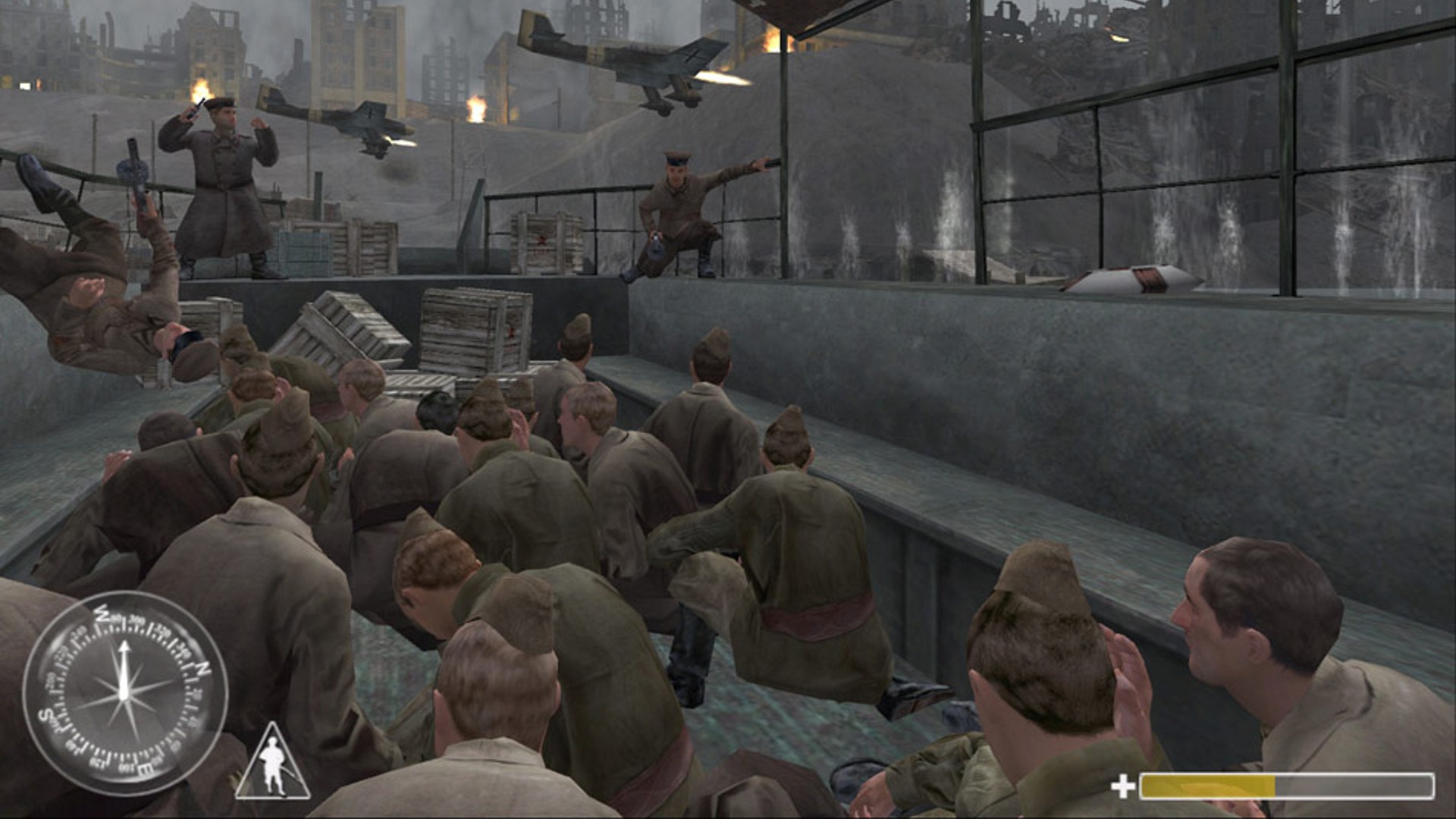
Steven Spielberg started Medal Of Honor," says artist Brad Allen. "He sent us a video one time, commending certain things that he was liking in the game as we were progressing. It was super neat to get to work on a Spielberg project."
Brad's role at 2015 Inc was his first games industry job. In fact, although the studio had secured a modicum of credibility in first-person shooter circles with its SiN expansion, Wages Of Sin, it was mostly populated by young and inexperienced developers – nearly all of whom had travelled to Tulsa, Oklahoma from elsewhere in America to seize their breakthrough opportunity. "I had moved out there from California, so it was a bit of a culture shock," Brad says. "But it was really fun."
Robert Field, a modder who had built the enemy AI for Quake's popular Frogbot, was even further from home. He arrived at Tulsa International Airport on 15 December 2000, when development on Allied Assault was already underway. "I'm from Brisbane in Australia, so walking around in the snow in Tulsa was interesting," he says. "We even had a tornado once." The weather was tolerable because the work was fulfilling. With the Nineties over, Medal Of Honor: Allied Assault looked like the future. "To me, up until that point, a lot of games were hyper-coloured and bright and shiny, and this was not," Brad says. "This was subdued and realistic looking, and all the colours were drab. It was much more rich and interesting, the way they were presenting it."
D-day
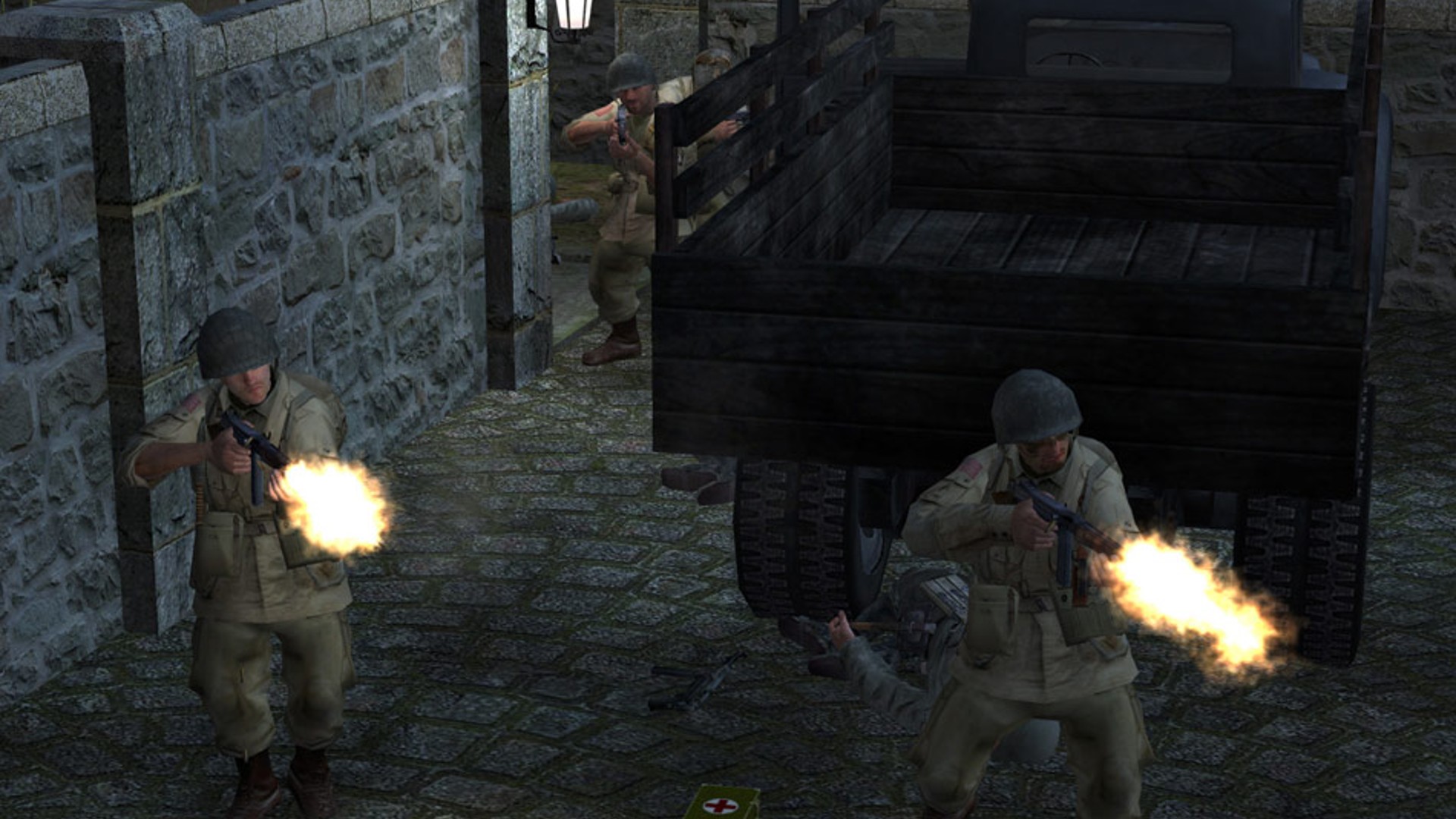
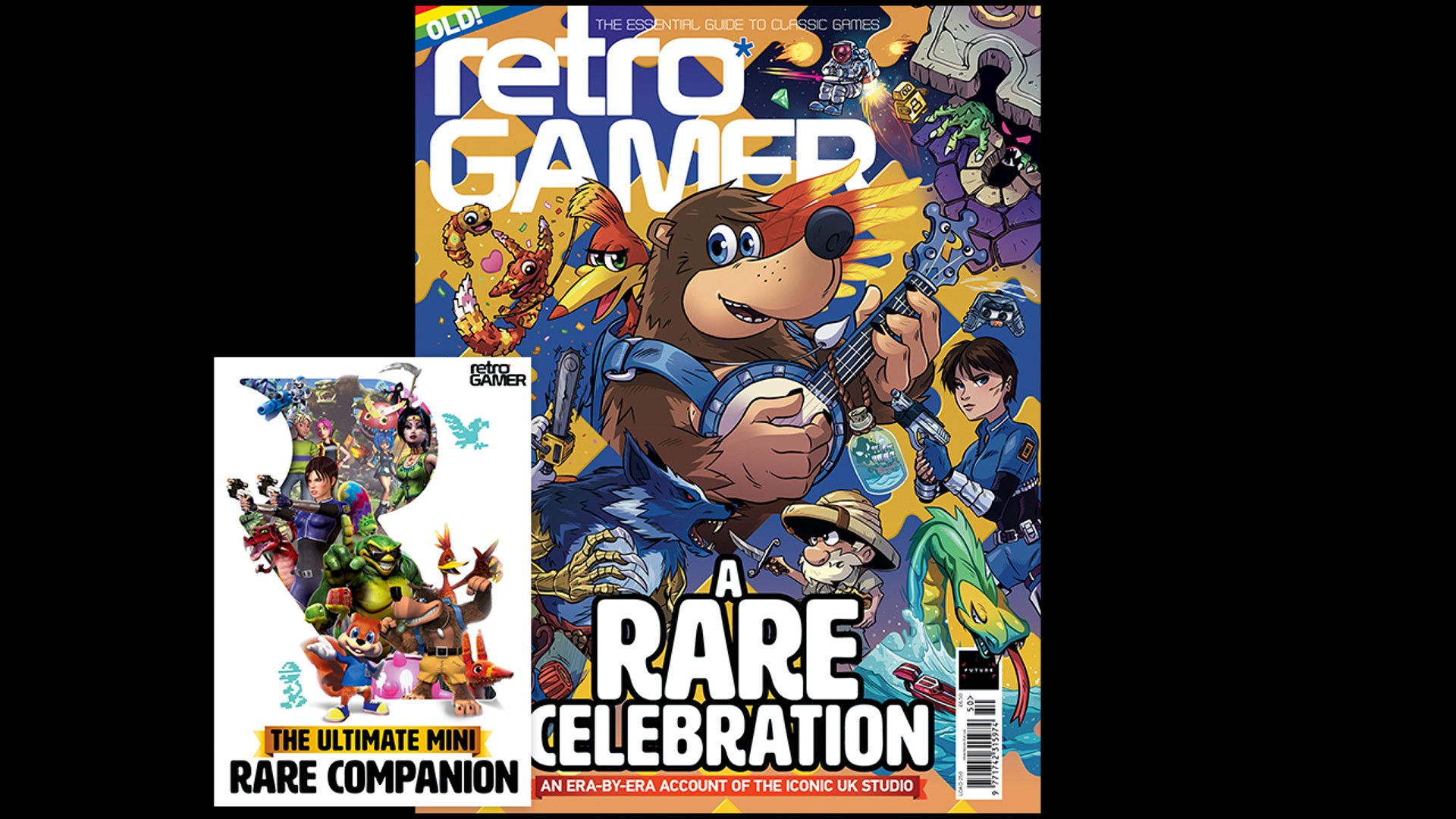
This feature originally appeared in Retro Gamer magazine. For more in-depth features and interviews on classic games delivered to your door or digital device, subscribe to Retro Gamer.
The foundations for Call Of Duty were set here, in the shadow of Spielberg. In place of the machismo of Doom and Duke Nukem was a more subtle sense of historic pride, mingled with sadness and a sense of sacrifice. Your avatar wasn't a superman, but a vulnerable soldier victimised by World War II, attempting to carry out hair-raising orders as best they could. This was an interactive Saving Private Ryan or Band Of Brothers. Or at least, it would be, if 2015 Inc's rabble could all push in the right direction.
"When I arrived, the animation system and everything was broken because they were replacing everything," Robert says. "I didn't know much about it because I was a mod author, so I thought, 'Oh, this is what you do.' Later on, Jason West brought the discipline where you always have a working game and you're able to show prototypes." Jason West had joined the team as a programmer to work on a console port. "But then I think Vince Zampella convinced him to take over," Robert says. "He became pretty much the lead of Allied Assault. We were a bunch of mod authors and he came on and got us meeting the schedule." Brad, who was creating the game's characters, would grab photos of members of the team and transform them into German or American soldiers, telling them, "You're gonna be the bad guy."
"Everybody that I was working with was super talented, and super enthusiastic about what we were making," he says. "Everybody wanted to put the special sauce on it and spend the extra hours. It was really a fun experience, minus a few other things." Some on the Allied Assault team had concluded that they didn't want to stay at 2015 Inc beyond the end of the project. "We weren't going to get a good deal with the owner of 2015," Robert says. "Jason, Vince and Grant [Collier] wanted a better deal where we got royalty sharing." Resolving to set up a new company, a handful of key staff started to make moves. "We were all over the place, with five or six guys sneaking off to lunches and going, 'What are we going to do?,'" Brad says. "We had no idea what the name of the company was going to be. We just started spitballing ideas for games. One of our ex-producers had connections with different publishers, and he was like, 'What if we got this IP or that IP?' So it was really exciting. There were a ton of different ideas floating around and options that we could have done."
Yet the first thing the new Infinity Ward worked on was, in fact, Medal Of Honor. More precisely, an add-on pack for Allied Assault at the behest of EA. "We were still working on the same game, with the same publisher, but as another company," Brad says. Many packed up and vacated the 2015 Inc office overnight. Although, as Brad remembers, Robert didn't get the memo straight away, "Robert was away on vacation or out of the country or something. So we didn't have a way to let him know. He shows up the next day, and everybody's gone. I think Grant contacted him and let him know, 'Hey, we're here, this is what's going on'. He may have been a little bewildered." The change and bewilderment didn't end there. When Infinity Ward was deep into development on its Medal Of Honor expansion, EA stopped paying for the work. "We were about to go under and get absorbed into the EA collective," Brad says. "And Activision swooped in. They were like, 'Hey, we'll fund your next project. If you work for us, you can stay together as a team.' And that was a really big issue for us, because we really liked working with each other."
"It's a family type of thing," Robert says. "We felt we had a good team, and we had Jason, who was pretty much the team leader, so we all rallied behind him." Activision wanted Infinity Ward to make a competitor to Medal Of Honor – an idea which didn't enthuse the entire team, who had already spent years with their heads in a simulated Second World War. But it was the best offer they had, and so they agreed – initiating a partnership that has now lasted for two decades and counting. "The goal was having a good solid team of people to work with that we liked," Brad says. "We trusted each other's instincts and talents [at Infinity Ward], and it was a great opportunity to continue working with nearly everybody." Twenty-two people had worked on Medal Of Honor: Allied Assault. "And when Call Of Duty started, we all moved six miles down the road in Tulsa," Robert says. The team occupied the 37th floor of the 60-story CityPlex tower. The iconic local building was first built by controversial televangelist Oral Roberts at the request of, as he told it, a 900-foot vision of Jesus. "Thirty-seven flights of stairs is not fun for fire alarms," Robert says. "After the first alarm I said, 'I'm not trashing my knees anymore. If it burns down, it burns down.'"
Infinity Ward was led by Ward, Zampella and Courier. "To fund Call Of Duty, Grant was maxing out his credit card originally," Robert says. "He was important from a biz point of view. And he got paid out well in the end." Ward was the creative force, however – steering the team through a tight 18 months of development. "Starting from Call Of Duty, Jason had a whole system of how we do features," Robert says. "At the beginning, all the level designers would write on cards the things they wanted in the game. Then the programmers would estimate how long that would take and look at our schedule and say, 'OK, this is how many things we think we can do.' We'd prioritise them and go down the list. We were scarred pretty badly from Allied Assault, where it got delayed."
The team put together a detailed design doc – something they wouldn't bother with on later projects. "I guess we were trying to impress Activision," Robert says. "And Jason wanted to make sure we were on track." The addition of multiplayer was a compromise, made to please the publisher – a surprise, given how important the online component would later become to the series. "There was this notion back then of back-of- the-box features, and Activision was focussed on the buzzwords," Robert says. "We said, 'OK, we'll add multiplayer.' By Modern Warfare, half the development was on multiplayer. Earlier on, it was just minimal."
Infinity Ward's primary focus was the campaign, an ambitious single-player mode that would see the player fight on different fronts of the war as three separate soldiers – one Russian, one British, one American. "Probably at one point it was more than three," Brad says. "But we had to narrow it down for scope reasons, and have it all be able to fit on a CD."
Strength in numbers
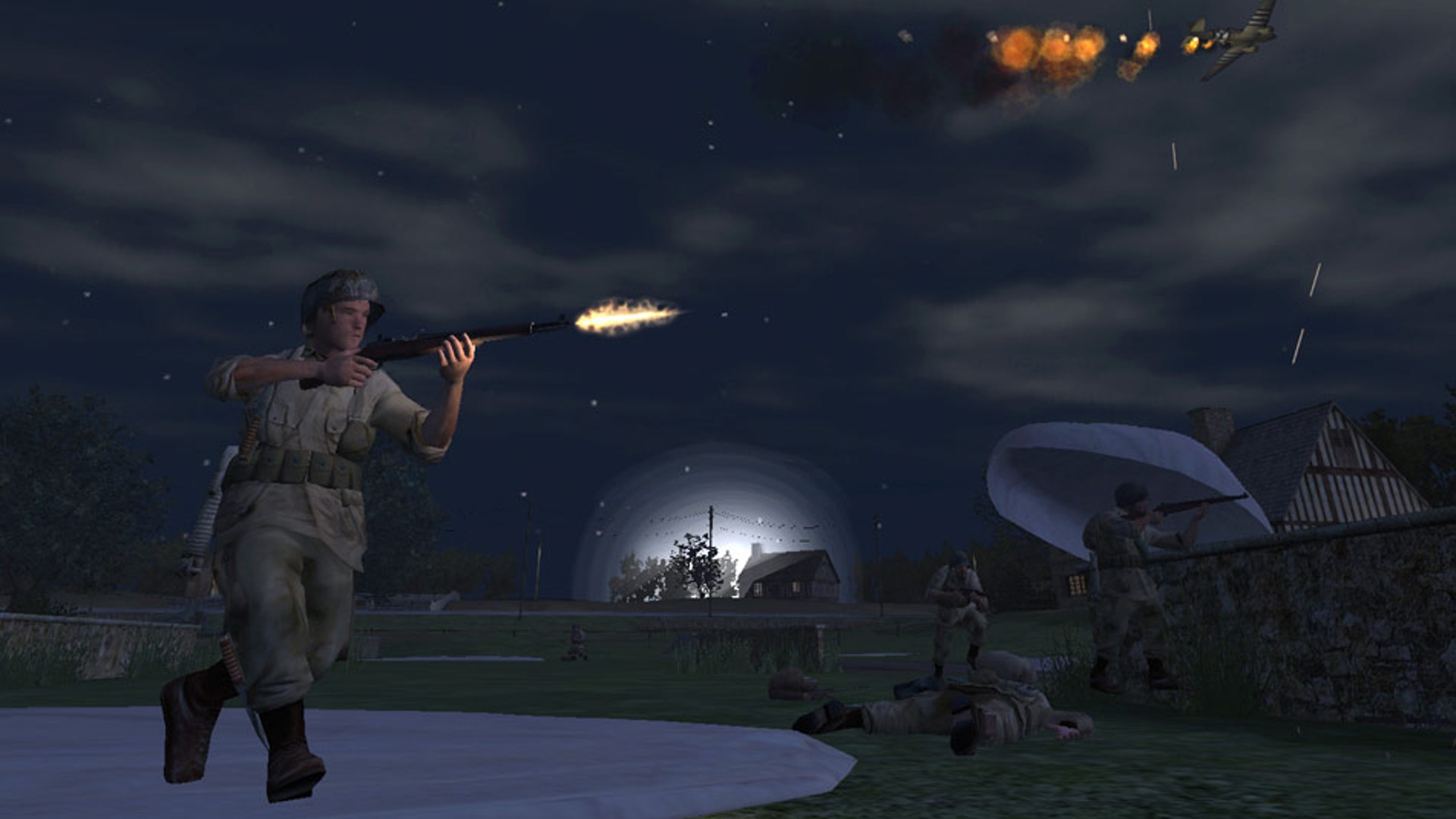
"I had our lead animator holding my hand and going, 'Try this, we're going to make this a little more extreme,'" he says. "It was a learning experience. Everybody was free to contribute."
The decision to back multiple protagonists would have huge implications for COD's future of perspective-swapping stories. "I think we were put off by the idea of having just the one hero character that saves everybody in the war," Brad says. "It didn't feel as realistic. We wanted to represent everybody that contributed to that part of history." Like Medal Of Honor: Allied Assault, Call Of Duty was to be T-rated in the United States – suitable for ages 13 and up, with violence but little blood. Nonetheless, Infinity Ward wanted to ramp up the grittiness and intensity. "We had aiming down the sight and going prone, those sorts of things that were more tactical," Brad says. "A lot of the guys were playing Counter- Strike and they liked all those aspects of the shooting and the realism." Players of the first Call Of Duty demo were in awe when, during a nighttime assault on the French village of Sainte-Mère- Église, the impact of a nearby mortar shell would flatten their character prone, the impact ringing in their ears.
"There was a lot of cool attention to detail that was put into that," Brad says. "We wanted it to feel like the player was the person, and the immersion was the thing. And it didn't have to be a name that went with a character that you were playing. It was really the idea of getting a feel for what it would be like to be in that situation." Brad was one of five artists on a team that ultimately totalled 26. "And a lot of people wore a lot of different hats," he says. "That was a good aspect of a small company. You're able to play with whatever you can." During one memorable mission, the player crosses the Volga river into Stalingrad with a group of Red Army conscripts – and watches in horror as a boat of friendlies is struck by German artillery. Brad got to animate the ship as it sank into the depths.
"I had our lead animator holding my hand and going, 'Try this, we're going to make this a little more extreme,'" he says. "It was a learning experience. Everybody was free to contribute." And if an idea didn't work out, nobody got into trouble. "That added to the game being as good as it was, because everybody was heard and everybody got excited about throwing out an idea," Brad says. "Maybe it would stick, or somebody might be able to help make it better." The Stalingrad level was heavily influenced by Enemy At The Gates, the 2001 Jude Law movie that follows two rival snipers over a long winter of battle. In one harrowing moment, the player is handed ammo rather than a gun – and commanded to pick up the rifle of a fellow soldier once he is killed. It's a scene pulled directly from the film.
"Level designer Steve Fukuda had Saving Private Ryan running on another screen continually during the whole game, pretty much," Robert says. "Actually, there was talk that Activision wanted to make a Band Of Brothers series. But then they'd have to pay licensing. I don't think it would've been the best decision." The team was hungry for any new piece of cinema that featured the Second World War. "That helped us with setting things apart visually," Brad says. "Luckily there was a nice wealth of really strong cinematography. Having that goal of making things feel cinematic and real and heavy led the way for the look of the three campaigns." Research tools were worth their weight in gold.
"Whatever books we could find," Brad says. "Whatever things we could find on the internet. For the second COD, we sent a bunch of guys to different places for photo reference. But for the first one it was all about Google." Infinity Ward bought model kits, and visited tank and aircraft museums on photo safaris. "When you didn't have a whole lot of access, you worked with what was close by, and luckily in Southern California there's a plethora of places that have all these artefacts and equipment from back in the day," Brad says. "Even if it's not in the best condition, all of that wear and tear adds to the flavour. You don't want everything to look perfect, even though probably at the time it was brand-new. If you throw a little dirt and rust on it in the game, it just looks cool." Legendary military consultant Dale Dye returned, having worked with the team on Medal Of Honor. But the artists most valued their time with re-enactors, who would allow their gear to be photographed, "We were always trying to be as accurate as we could."
Call Of Duty sold the idea that, rather than a catchphrase-ready commando, you were just one face in a crowd of desperate fighters. Robert worked on the AI, ensuring that each soldier could navigate the rubble and get to their intended destination, "If you've ever seen an AI clip through a wall in Call Of Duty, that's using the fail-safe that Jason said we definitely had to have," he says. "He said, 'No matter what, they have to get from point A to point B.' If the AI doesn't get there, the level's broken, it's not going to continue. If they were really getting in trouble, getting caught on something, I would just noclip them wherever they're trying to go." In some of the larger battles, Infinity Ward compromised on the intelligence of its troops, by having the more distant soldiers follow animated paths rather than using their heads. "When you get off the boat in Stalingrad and all the guys are running up, they're actually not AI," Robert says. Among the hundreds of soldiers who passed through Call Of Duty's campaign, one moustachioed individual stood out: Captain Price.
"It's pretty crazy," Brad says. "He made it all the way to Modern Warfare. He's one of the key guys now, he was the guy that stuck. Everybody was meant to be, not throwaway, but they weren't supposed to be the heroes. Everybody was supposed to be a hero, so nobody was supposed to be the main badass." The "big crazy struggle" of the project came in the summer of 2003, the year Call Of Duty was to ship. That's when all of Infinity Ward upped sticks and moved from Oklahoma to California – into the LA building they would occupy until Modern Warfare 3. "We were more than just coworkers," Robert says. "And the fact that we all came from Tulsa, it's like this journey you're on."
"We were packing up all our stuff, figuring out where we were gonna live, and had to hit the ground running and make this game," Brad says. "It didn't really seem to affect us as much as we thought it was going to, because everybody was nose to the grindstone. We were all there as many hours as we could be." There were no demands that staff show up on the weekends. "But a lot of people were, because that was the mentality," Brad says. "As a new company trying to prove ourselves, everybody was super focussed on making our first game really good. Or else we wouldn't get to make another game. There were a lot of unspoken stresses."
Los Angeles was chosen partly because it was near Activision HQ, and would allow studio leaders easy access to the producers managing the game. But as far as Robert was concerned, Infinity Ward felt like an independent company, with an independent culture. "You wouldn't get the sense that you were working at Activision," he says. "We were insulated from disputes over what was going to happen on the game. That would be Vince and Jason talking with Activision behind closed doors, and we'd be shielded."
Monster hunter
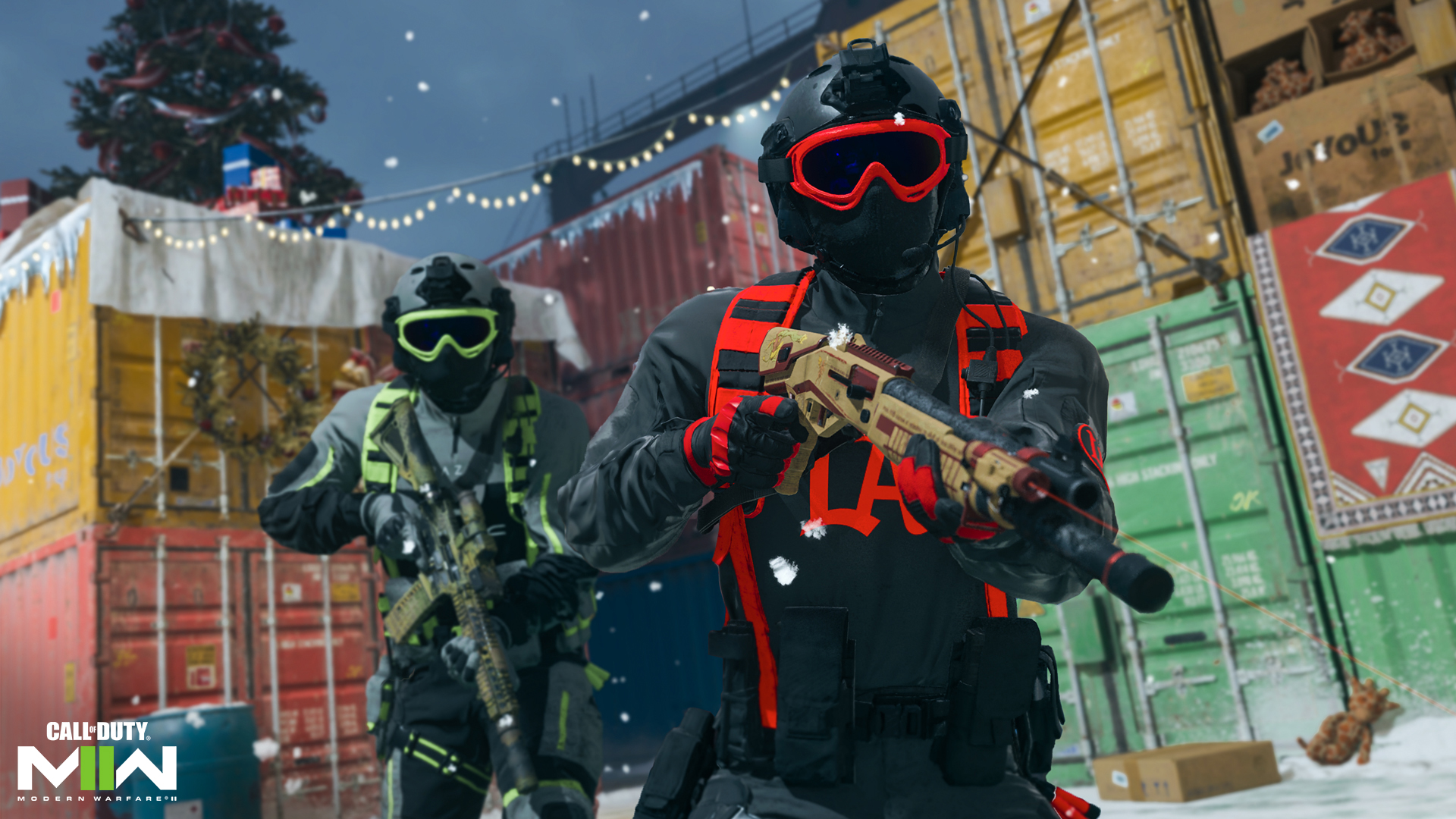
"Obviously things can go wrong and you start shouting at each other," he says. "And designers are trying to outdo each other with the cool scenes. But you've all got the sense of being on a team working together, pushing each other: 'I'll control that area, you control this.'"
To the publisher's credit, it often gave the team space to do their best work. "We weren't getting executives going, 'We want you to put this or that in the game,'" Robert says. "We weren't doing corporate dictates, we were just channelling what we thought was best for the player." The team at Infinity Ward was already proven, thanks to its work on Medal Of Honor. But they were intimidated by EA's series, the monster they'd helped create – not knowing if fans would stick with the name they knew or recognise the pedigree of the team behind Allied Assault. "EA had crazy awesome marketing at the time for Medal Of Honor," Brad says. "So we would see their commercials coming out, beautiful movie trailer-type things with live action. And we were like, 'Oh, man, that looks so good.'" As Robert remembers it, the team had been in competition with others for as long as it had existed. "On Allied Assault, we were trying to outdo the console Medal Of Honor," he says. "For Call Of Duty, we were going against EA's Allied Assault expansion, Spearhead. It's like a bogeyman." Robert compares the process of pulling Call Of Duty together to being in a Quake clan.
"Obviously things can go wrong and you start shouting at each other," he says. "And designers are trying to outdo each other with the cool scenes. But you've all got the sense of being on a team working together, pushing each other: 'I'll control that area, you control this.'" The push to the end was frantic and exciting. "And then you're just waiting for the reviews to come out," Robert says. "That was the first shot of drugs in the vein." Call Of Duty was hailed as a masterpiece, with scores over 90%. "We were just happy that it was well received," Brad says.
The day after launch, Activision acquired Infinity Ward. For a few million dollars, the publisher bagged the studio behind the franchise that has since made it unstoppable. In 2020 alone, Call Of Duty made Activision over $3 billion. "They got us for a song," Brad says. "That was a super good business decision." In 2004, when EA finally did release its answer to Call Of Duty "it really wasn't competitive". "We were worried about them because we saw their trailer and they had really cool rendering stuff," Robert says. "But once Medal Of Honor: Pacific Assault came out it was like, 'OK, these guys aren't our competition.' They didn't have their act together." By then, Infinity Ward was already turning its attention toward Bungie, which inspired West and the team to drop medikits in favour of regenerating health for Call Of Duty 2. "It was obviously based on Halo, because they had their shields," Robert says. "You don't want the game to become this treasure hunt for health packs. You want it to be more about the experience of playing than worrying about your last little bit of health."
The shift reflected a growing concern with approachability. If an Infinity Ward designer was right-handed, they were told to test their level using their left, so that their aim would match that of an unseasoned player. "We were trying to get maximum sales," Robert says. "You're obviously not trying to do a garbage game, but we really were focussing on getting in as many people as possible. We'd get the receptionist doing playtesting, people who hadn't played games before. Each level designer would have to watch the person play their level without any help, and if they were stuck in some spots, the designer would have to try to fix that."
Approachability may have prepared Call Of Duty for the big time, but the switch from a historical backdrop to the modern day sealed the deal. "Our designers wanted to push for a new setting, because we were burnt out," Brad says. "As a company, we had made three World War II games, including Medal Of Honor. And so we were like, 'Can we change this up? We've been making World War II longer than World War II lasted.'" There was pushback from Activision, who didn't see many successful shooters on the market with contemporary settings, "They really didn't want us to make Modern Warfare."
Brad doesn't know what changed the publisher's mind, but the launch of Modern Warfare marked Infinity Ward's ascension to the very peak of pop culture. Call Of Duty became a water-cooler game, its campaign twists discussed on lunch breaks in schools and offices. It secured the future of the series for many more years to come. "We weren't expecting it," Brad says. "We knew that it was fun, especially the multiplayer – we would stick around late at night and play. But the success of that was ridiculous. It was a cool and fortunate experience – not all companies get to stick together that long."
This feature originally appeared in Retro Gamer magazine. For more fantastic in-depth features, interviews, and more on classic games, subscribe to Retro Gamer or pick up a single issue today.







